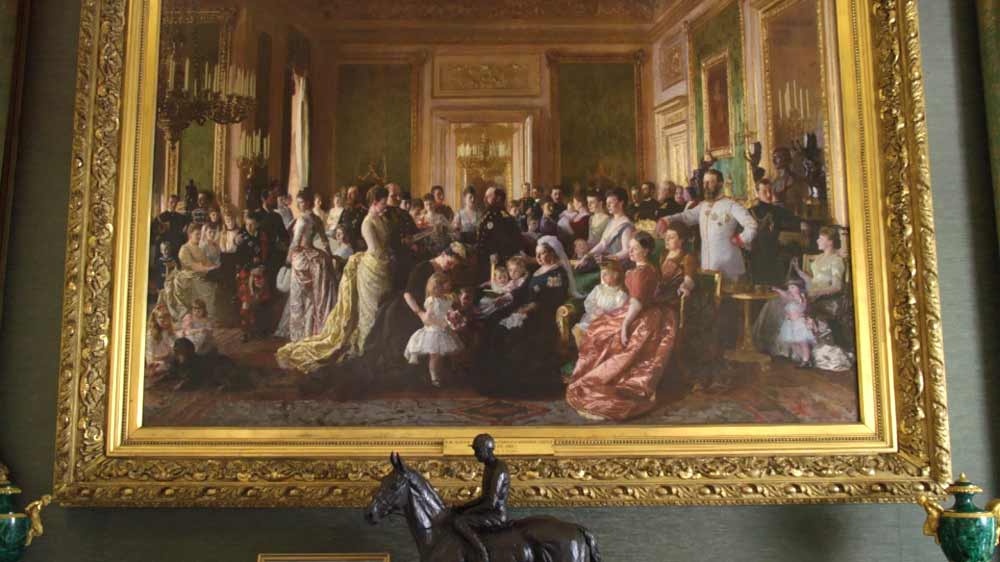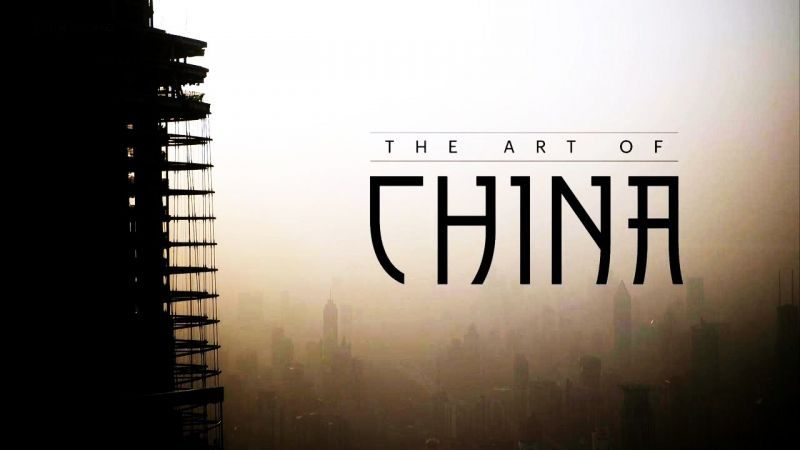Art, Passion & Power – The Story of the Royal Collection episode 4: Andrew Graham-Dixon explores how royal collecting has changed since the days of Queen Victoria. This is a story of the British monarchy’s remarkable survival, while elsewhere the crown heads of Europe crumbled in the face of world wars and revolutions. But it is also an age when women took charge of royal collecting; from Victoria to Elizabeth II, queens and queen consorts have used art to steady the ship of monarchy during this uncertain age.
It’s one of the curiosities of the Royal Collection that as the monarchy’s power diminished, so too did the objects they collected. Gone were epic canvases, instead came objects of exquisite, delicate and intimate beauty. Andrew marvels at a selection of the royal family’s collection of Faberge jewellery – one of the greatest in the world – that includes the Mosaic Egg from 1914. So taken were Edward VII and his wife Queen Alexandria with the works of Peter Carl Faberge, that the jeweller opened a London shop to service the demands of royal clientele.
And then there’s Queen Mary’s Dolls’ House – presented to George V’s queen to thank her for her steadfastness during the first world war, the Dolls’ House is an astonishing artistic collaboration by over 1,500 people and companies, replete with books containing new stories by authors like Arthur Conan Doyle, tiny champagne bottles filled with real champagne and even mini shotguns that can be broken, loaded and fired. More than just a dolls’ house, this is a three-dimensional archive of a vanished artistic age.
Art, Passion & Power – The Story of the Royal Collection episode 4
The Collection reveals fresh insights into these remarkable women, in particular HM the Queen Mother, who loved art and collected with flair. At Clarence House, Andrew discovers a surprising collection of contemporary British art that she assembled in the 1930s and 1940s, including works by Walter Sickert, LS Lowry, Paul Nash and Augustus John. Andrew traces her greatest commission, a series of 26 paintings of Windsor Castle by John Piper, painted during the Second World War. With Windsor at risk of being bombed, Piper created an eerie dreamscape filled with black skies and foreboding.
Andrew also brings royal collecting up to date. From the outset Elizabeth II’s priorities had been focused on preserving and displaying the Collection, and Andrew shows how one of the key events in its recent history – the Windsor Castle fire – was an unlikely catalyst in the reform of the Collection’s care. Concluding his exploration, Andrew meets HRH the Prince of Wales to view two of his recent commissions, powerful portraits of veterans of the Battle of Britain and the D-Day landings, and to discuss the continued importance of this remarkable collection.
Royal Collection – The Story of the Royal Collection
The Royal Collection of the British royal family is the largest private art collection in the world.
Spread among 13 occupied and historic royal residences in the United Kingdom, the collection is owned by Elizabeth II and overseen by the Royal Collection Trust. The Queen owns some of the collection in right of the Crown and some as a private individual. It is made up of over one million objects, including 7,000 paintings, over 150,000 works on paper, this including 30,000 watercolours and drawings, and about 450,000 photographs, as well as tapestries, furniture, ceramics, textiles, carriages, weapons, armour, jewellery, clocks, musical instruments, tableware, plants, manuscripts, books, and sculptures.
Some of the buildings which house the collection, like Hampton Court Palace, are open to the public and not lived in by the Royal Family, whilst others, like Windsor Castle and Kensington Palace, are both residences and open to the public. The Queen’s Gallery at Buckingham Palace in London was built specially to exhibit pieces from the collection on a rotating basis. There is a similar art gallery next to the Palace of Holyroodhouse in Edinburgh, and a Drawings Gallery at Windsor Castle. The Crown Jewels are on public display in the Jewel House at the Tower of London.
About 3,000 objects are on loan to museums throughout the world, and many others are lent on a temporary basis to exhibitions.




